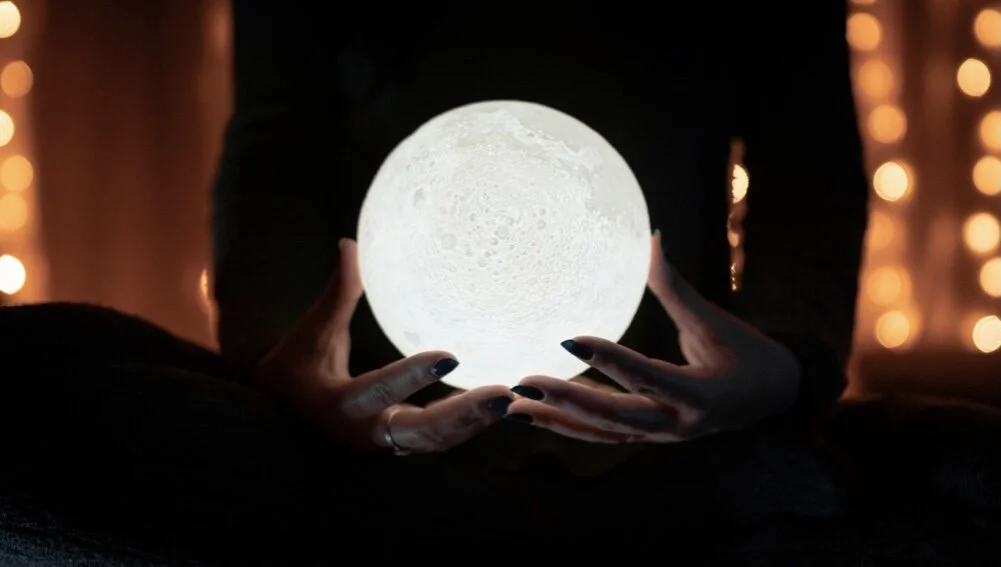How to Help the Earth: High School Edition
Photo by Dorie Palmer.
I have always had a deep passion for the environment. I love being outside and doing everything from backpacking in the middle of nowhere without phones or showers for a week, to kayaking for miles on end, to simply enjoying a walk with my dog. As a kid, one of my biggest role models was Jane Goodall. Her love for animals always reminds me that humans are not the only ones living on this Earth, and we cannot act solely for our own interests and expect the earth to keep providing for us. We share the earth with 8.7 million other species, but I don’t think that we are doing a very good job of sharing right now.
When I took AP Environmental Science with Ms. Wainio this year, I was shocked to discover how much danger the Earth and all of its creatures are in. One million animal species have gone extinct due to habitat loss and change, and over 100 million people have died because of pollution, according to a study from Icy Tales. Additionally, the Arctic may lose all of its ice by 2040, and sea levels may rise up to 23 inches by the end of this century, according to MSNBC News.
What’s worse: the United States has caused more climate change than any other country. According to The Washington Post, we produce 27% of all the carbon dioxide that is emitted into the atmosphere, which is significantly more than any other single country. With this shocking rate of emissions, it would take five Earths to supply every person with resources if everyone in the world lived as Americans do. And the saddest part is that most of the damage we are causing doesn’t usually affect us. Although the climate change that we cause does greatly harm some parts of America, such as California, which currently has 99.84% of its land in drought, a lot of our emissions are also hurting other parts of the world, according to MSNBC News.
If reading this makes you a little depressed, that means you care. You can show that you care by learning new ways to lessen your impact on the Earth and by discovering more sustainable habits. A lot of websites and books give great tips, but they are mainly targeted towards adults who buy groceries every week, manage the upkeep of their own house and yard, choose what type of car to buy, and cook and clean. But that doesn’t mean that teenagers can’t do anything to help. After all, it is in young people’s hands to make sure that the alarming rate of climate change slows down so that we can continue living on Earth. Here are 12 tips about what you can do as a student in high school to change the future:
Invest in reusable items: Although buying a metal straw or a reusable lunch box might seem a little more expensive, it is a sacrifice that can help reduce your impact in huge ways. And in some ways, it can actually save you money. For example, using a reusable cup and straw at Starbucks gives you a great discount, and the workers usually fill the cup all the way to the top regardless of what size you ordered!
Make some changes to the way you shop for clothes: Obviously, shopping less is desirable when wanting to decrease your impact on the Earth. But sometimes this just isn’t practical, and new clothes are necessary. If you’re getting tired of your wardrobe, there are better ways to get new clothes than just going to the mall. Consider companies that sell gently worn clothes, stores that sell quality clothes that may be more expensive but will last longer, or try to start with brands that do their best to make their waste as small as possible. Thredup is a great online store that sells second hand name-brand clothes at great prices. Check it out at https://www.thredup.com/, and try to check out some companies like Patagonia, Pact, or H&M’s Conscious Collection that work on being sustainable!
Change the way you shower: Most people already know that taking shorter showers helps save water. But taking a shower that isn’t quite as hot can also reduce the amount of energy you use. Try taking a warm shower instead of a hot shower, or even try a cold shower: not only does that waste less energy for heating water, but it can also force you to take quicker showers. (Another bonus: some research even shows that cold showers help boost cardiovascular health and blood flow!)
Recycle- but the right way: Most people know that paper and plastic are recyclable, but there are too many rules to remember when it comes to other products. A lot of people recycle products even when in doubt about whether they are recyclable or not. But recycling improperly can have a large negative impact. When the wrong items are recycled, employees have to pick them out by hand, and if employees miss a non-recyclable item, it could end up breaking machines that are not designed to be processing such materials. Also, some items like pizza boxes with grease can contaminate recyclables, causing shipments to be turned away by buyers because of potential dangers. These issues result in a waste of transportation energy which ultimately causes unnecessary pollution. When people recycle non-recyclable objects, the items have to be transported to a landfill, which will also result in excess transportation and pollution. And recycling companies have to pay for these extra trips, which decreases their profits, meaning that costs for recycling services might have to go up, according to Vogel Disposal Service. Look up your local recycling facility and read their rules about what they accept and don’t accept- it sounds like a lot of work, but it’s more straightforward than you might expect! Also, don’t recycle items in bags that can’t be recycled. In addition, make sure that the items you recycle are clean and dry. If you live in Sussex, consider checking out the recycling rules at http://www.johnsdisposal.com/site/wp-content/uploads/Sussex-Village-2018-1.pdf
Remember the 3 Rs: You probably learned about Reduce, Reuse, and Recycle sometime during elementary school. They are a great way to remind yourself to try to lessen your impact. The 3 R’s go in order of what is the most ideal to the least. Obviously, reducing the amount of products you buy is the best way to go in terms of making a smaller impact on the Earth. But it’s hard to avoid buying certain things like clothing, so when you do make purchases, remember the second and third Rs. When you are done with your product, see if you could reuse it first before throwing it away. And before throwing it away, check to see if it can be recycled. (But remember that not everything is recyclable!) Try to make recycling and throwing things away your last resort.
Don’t leave your car in idle: Sometimes when you get to school, you may just want to stay in your warm car for a couple more minutes. But doing this emits a lot of exhaust that you end up breathing. Although it’s nice to be warm, it’s unhealthy to breathe in dirty air. It’s also more expensive to keep burning gas that isn’t necessary. According to the Environmental Disease Fund, for every ten minutes you leave your engine off, you are preventing a whole pound of carbon dioxide from being emitted into the atmosphere.
Do your research for online shopping: It may sound impossible to stop online shopping, and I completely understand. It’s super convenient and fun to shop online. But online shopping for new clothes and products means packaging and shipping, creating much more waste and pollution than shopping at a nearby store. However, in some ways shopping online could have a smaller impact, like if you are shopping for used products that will be shipped in recyclable packaging. Also, some products online could be biodegradable, reusable, or made without producing much waste. On the other hand, shopping at local stores can be cheaper and you are helping the local economy. Overall, you may just have to consider the pros and cons of your options in order to decide which is better.
Whenever possible, choose the least amount of packaging: It’s pretty obvious that less packaging means less waste. So if you’re ever shopping for food or other products, try to avoid the items individually wrapped together in a plastic bag, all wrapped in cardboard, because that’s just a little excessive.
Talk to your family about composting: When plant and food matter is thrown away, it has to decompose in landfills without any air. This anaerobic decomposition creates methane, a greenhouse gas. According to Princeton University, methane is 30 times more potent at trapping heat than carbon dioxide is, meaning it contributes greatly to the warming of Earth. By composting waste, you can help reduce methane emissions. Going along with this, it is important to try not to waste food. If you have more food than you can eat, try to find a friend to share it with, or save it for later!
Buy less electronics: When another new iPhone comes out, it’s really tempting to throw out your old phone and get the new one. But constantly buying new phones and other electronics is not a sustainable practice. Electronic waste releases a huge amount of toxic chemicals into the air, water, and even humans. Sadly, most electronic waste is sent to developing countries, which can expose those who come into contact with it to toxins like lead, zinc, chromium, and many more, according to Mayer Alloys Corporation. By buying less electronics, you can reduce the impact of toxic chemicals on the Earth and people. Additionally, be on the lookout for ways to recycle your old devices the right way, like finding a recycling facility that specializes in electronics. For example, in February, Hamilton’s Club Action had a used devices collection where they collected old electronics to be properly recycled.
Volunteer: There are a lot of fun ways to get involved in helping improve the environment and our local community! You can pick up trash on the Bugline Trail in Sussex, or volunteer for nearby river cleanups when you get the opportunity.
Keep caring: It is easy to start to feel defeated about the climate crisis and think that no matter what you do, it will never be enough. But try to remind yourself that even a single small change can help. Don’t view your actions as pointless, because they make a bigger impact (either positive or negative) than you realize.
If you’re ever feeling downhearted about the Earth and your efforts to help, try to spend more time outside to remind yourself how beautiful nature is and can continue to be, as long as we keep caring. This can renew your hope that the future can thrive sustainably, and your faith that even you, one out of the 7.7 billion people on Earth, really can make a difference. If we can keep a hopeful, optimistic attitude about the Earth, it can change the way the world thinks about the environment and our future. When you care, others learn to care, too. And in the wise words of Dr. Seuss, “Unless someone like you cares a whole awful lot, nothing is going to get better… it’s not.”






